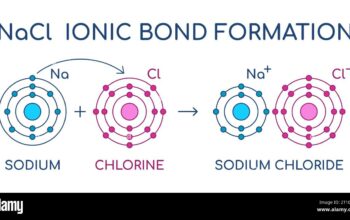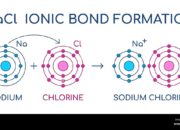The motion of atoms and molecules is a phenomenon that captivates both scientists and laypeople alike. This perpetual dynamism is a cornerstone of physical science, yet it invites curiosity about the underlying principles governing such motion. Observing the microscopic world reveals an intricate tapestry of activity that operates at speeds and frequencies well beyond human perception. Understanding why atoms and molecules are always in motion not only enriches knowledge but also deepens appreciation for the complexities of nature.
At the quark-level—beyond the atoms—the universe is populated with profoundly energetic entities. Quantum mechanics, the framework that describes much of particle behavior, posits that matter is inherently probabilistic. It imbues particles with an intrinsic uncertainty, which implies that they do not possess definitive positions at any given moment. This uncertainty principle, articulated by Werner Heisenberg, illuminates the notion that particles exist in “clouds” of probability rather than fixed points. As a result, atoms and molecules are not only in perpetual agitation, but their precise behaviors remain enigmatic and elusive.
The incessant motion of particles is further emanated through thermal energy. The kinetic theory of gases provides profound insights, positing that temperature is essentially a measure of the average kinetic energy of molecules within a substance. As temperature increases, molecules exhibit heightened motion—colliding with greater frequency and intensity. This kinetic framework accounts for numerous observable phenomena, such as diffusion and the expansion of gases, revealing how temperature variations directly influence particle dynamics.
To appreciate molecular motion, one must also consider the role of intermolecular forces. While the kinetic energy of individual molecules propels them forward, these forces govern the interactions and behaviors between them. Attractions such as van der Waals forces or hydrogen bonds can momentarily slow down or redirect motion, illustrating a delicate balance between cohesion and agitation. For example, in the liquid state, molecules retain close proximity, yet they continuously glide past one another, a seductive dance of liquidity characterized by both order and chaos.
Phase transitions further illuminate the concept of atomic and molecular motion. The transition from solid to liquid, and subsequently to gas, epitomizes these changes in motion and energy states. In solids, molecular motion is restricted to vibrational energy, with atoms locked in a rigid lattice. As thermal energy increases and the substance approaches its melting point, these vibrations metamorphose into translational motion, liberating the molecules into a more chaotic arrangement. In the gaseous state, molecular motion is liberated entirely, with particles zipping through space, colliding and scattering in the thrall of their kinetic energy.
Fluctuations of molecular motion also play a pivotal role in chemical reactions. The collisional theory asserts that molecules must collide with sufficient energy and appropriate orientation for reactions to occur. Hence, the ceaseless motion of atoms and molecules facilitates an environment where interactions can transpire, enabling the rich tapestry of chemical behavior. Each collision harbors the potential for transformation, fostering the spectacular variety of substances found in nature.
Moreover, the ongoing motion of atoms and molecules is inseparably linked to the principle of entropy. In thermodynamics, entropy is a measure of disorder or randomness. The second law of thermodynamics states that, in an isolated system, entropy tends to increase over time. This tendency towards greater disorder compels particles to remain in motion, as static configurations are thermodynamically unfavorable. As systems evolve, they naturally seek configurations that allow for maximum dispersal of energy, invariably stirring atomic and molecular activity.
The quest to understand atomic and molecular motion is not strictly confined to physics; it permeates into fields such as chemistry, biology, and material science. For instance, in biological systems, the incessant movement of molecules underpins biochemical reactions that sustain life. Enzyme-substrate interactions illustrate this phenomenon, as enzymes facilitate the transformation of reactants into products through the rapid motion and rearrangement of their constituent atoms. This molecular dynamism is pivotal in processes ranging from metabolism to cellular signaling, evidencing the interconnectedness of motion in sustaining life.
Furthermore, technological advancements showcase the utilization of atomic and molecular motion. The development of nanotechnology and materials relies on harnessing and controlling these movements at the molecular scale. The design of innovative materials, such as graphene or carbon nanotubes, exploits the unique properties of atoms in motion, culminating in applications ranging from energy storage to catalysis.
The ubiquitous movement of atoms and molecules invites a sense of wonderment. It reminds us that the universe, at its most fundamental level, is alive with an unrelenting dance of energy and interactions. This dynamic interplay is not merely a backdrop but rather a crucial player in the physical, chemical, and biological realms. The motion of these entities is a poignant reminder of the beauty interwoven in the fabric of science, prompting continued exploration and inquiry into the behaviors that govern our world.
Ultimately, the perpetual motion of atoms and molecules is a profound testament to the fundamental forces at play in the universe. The exploration of this phenomenon is a captivating amalgamation of quantum mechanics, thermodynamics, and chemistry, weaving together a narrative that celebrates the complexity of existence. The relentless motion that characterizes the microscopic realm not only informs scientific understanding but also inspires awe—a recognition of the intricacies and wonders of the cosmos.












